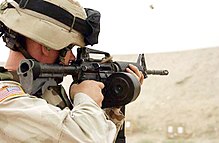
In the United States, assault weapon is a controversial term used to define firearms with specified characteristics. The definition varies among regulating jurisdictions, but usually includes semi-automatic firearms with a detachable magazine, a pistol grip, and sometimes other features, such as a vertical forward grip, flash suppressor, or barrel shroud. Certain firearms are specified by name in some laws that restrict assault weapons. When the now-defunct Federal Assault Weapons Ban was passed in 1994, the U.S. Department of Justice said, "In general, assault weapons are semiautomatic firearms with a large magazine of ammunition that were designed and configured for rapid fire and combat use." The commonly used definitions of assault weapons are under frequent debate, and have changed over time.
Gun laws in the United States regulate the sale, possession, and use of firearms and ammunition. State laws vary considerably, and are independent of existing federal firearms laws, although they are sometimes broader or more limited in scope than the federal laws.

In the United States, open carry refers to the practice of visibly carrying a firearm in public places, as distinguished from concealed carry, where firearms cannot be seen by the casual observer. To "carry" in this context indicates that the firearm is kept readily accessible on the person, within a holster or attached to a sling. Carrying a firearm directly in the hands, particularly in a firing position or combat stance, is known as "brandishing" and may constitute a serious crime, but is not the mode of "carrying" discussed in this article.
In the United States, the right to keep and bear arms is modulated by a variety of state and federal statutes. These laws generally regulate the manufacture, trade, possession, transfer, record keeping, transport, and destruction of firearms, ammunition, and firearms accessories. They are enforced by state, local and the federal agencies which include the Bureau of Alcohol, Tobacco, Firearms and Explosives (ATF).
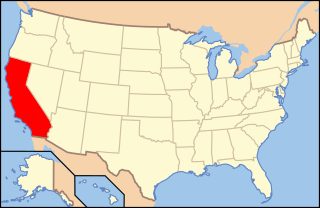
Gun laws in California regulate the sale, possession, and use of firearms and ammunition in the state of California in the United States.

Roger Thomas Benitez is a senior United States district judge of the U.S. District Court for the Southern District of California. He is known for his rulings striking down several California gun control laws.
McDonald v. City of Chicago, 561 U.S. 742 (2010), was a landmark decision of the Supreme Court of the United States that found that the right of an individual to "keep and bear arms", as protected under the Second Amendment, is incorporated by the Fourteenth Amendment and is thereby enforceable against the states. The decision cleared up the uncertainty left in the wake of District of Columbia v. Heller (2008) as to the scope of gun rights in regard to the states.
The Roberti–Roos Assault Weapons Control Act of 1989 (AWCA) is a California law that bans the ownership and transfer of over 50 specific brands and models of firearms, which were classified as assault weapons. Most were rifles, but some were pistols and shotguns. The law was amended in 1999 to classify assault weapons by features of the firearm. Firearms that were legally owned at the time the law was passed were grandfathered if they were registered with the California Department of Justice. The law was overturned in June 2021 in Miller v. Bonta; the ruling is stayed pending appeal.

Gun laws in New York regulate the sale, possession, and use of firearms and ammunition in the U.S. state of New York, outside of New York City which has separate licensing regulations. These regulations are very strict in comparison to the rest of the United States.

Gun laws in Hawaii regulate the sale, possession, and use of firearms and ammunition in the state of Hawaii, United States. Hawaii's gun laws are among the most restrictive in the country.

Gun laws in Illinois regulate the sale, possession, and use of firearms and ammunition in the state of Illinois in the United States.
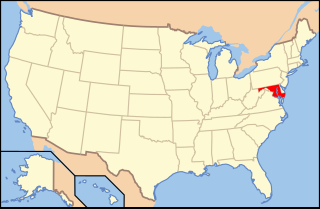
Gun laws in Maryland regulate the sale, possession, and use of firearms and ammunition in the U.S. state of Maryland.
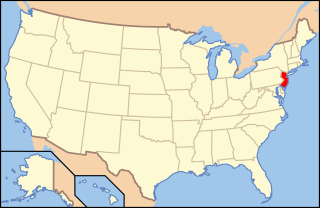
Gun laws in New Jersey regulate the sale, possession, and use of firearms and ammunition in the U.S. state of New Jersey. New Jersey's firearms laws are among the most restrictive in the country.

The Public Safety and Recreational Firearms Use Protection Act, popularly known as the Federal Assault Weapons Ban, was a subsection of the Violent Crime Control and Law Enforcement Act of 1994, a United States federal law which included a prohibition on the manufacture for civilian use of certain semi-automatic firearms that were defined as assault weapons as well as certain ammunition magazines that were defined as large capacity.
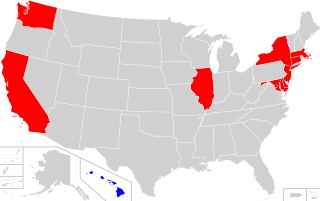
Assault weapons legislation in the United States refers to bills and laws that define and restrict or make illegal the manufacture, transfer, and possession of assault weapons. How these firearms are defined and regulated varies from jurisdiction to jurisdiction; generally, this constitutes a list of specific firearms and combinations of features on semiautomatic firearms.

A high-capacity magazine ban is a law which bans or otherwise restricts detachable firearm magazines that can hold more than a certain number of rounds of ammunition. For example, in the United States, the now-expired Federal Assault Weapons Ban of 1994 included limits regarding magazines that could hold more than ten rounds. As of 2022, twelve U.S. states, and a number of local governments, ban or regulate magazines that they have legally defined as high-capacity. The majority of states do not ban or regulate any magazines on the basis of capacity. States that do have large capacity magazine bans or restrictions typically do not apply to firearms with fixed magazines whose capacity would otherwise exceed the large capacity threshold.

Gun laws in the Northern Mariana Islands regulate the sale, possession, and use of firearms and ammunition in the Commonwealth of the Northern Mariana Islands. As the Northern Mariana Islands is a commonwealth of the United States, many federal laws apply, as well as Constitutional rulings and protections.

The 2016 Proposition 63, titled Firearms and Ammunition Sales, is a California ballot proposition that passed on the November 8, 2016 ballot. It requires a background check and California Department of Justice authorization to purchase ammunition, prohibits possession of high-capacity ammunition magazines over ten rounds, levies fines for failing to report when guns are stolen or lost, establishes procedures for enforcing laws prohibiting firearm possession by specified persons, and requires California Department of Justice's participation in the federal National Instant Criminal Background Check System.

Miller v. Bonta is a pending court case before Judge Roger Benitez of the U.S. District Court for the Southern District of California concerning California's assault weapon ban, the Roberti–Roos Assault Weapons Control Act of 1989 (AWCA). Judge Roger Benitez struck down the ban in a ruling on June 5, 2021. A three-judge panel of the Ninth Circuit issued a stay of the ruling on June 21, 2021, which left the ban in place as appeals were litigated. The panel then vacated Judge Benitez’s ruling and remanded it back down after NYSRPA v. Bruen was decided. The case was known as Miller v. Becerra before Rob Bonta succeeded Xavier Becerra as Attorney General of California in April 2021.
